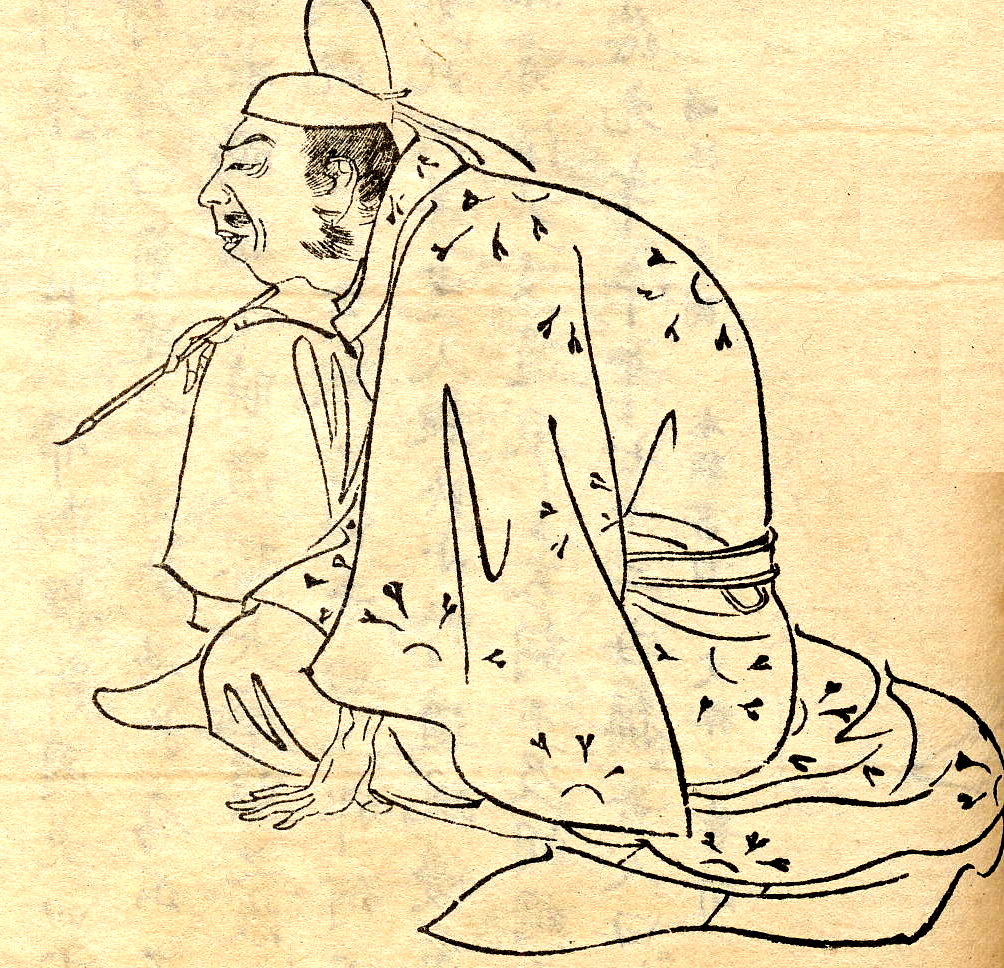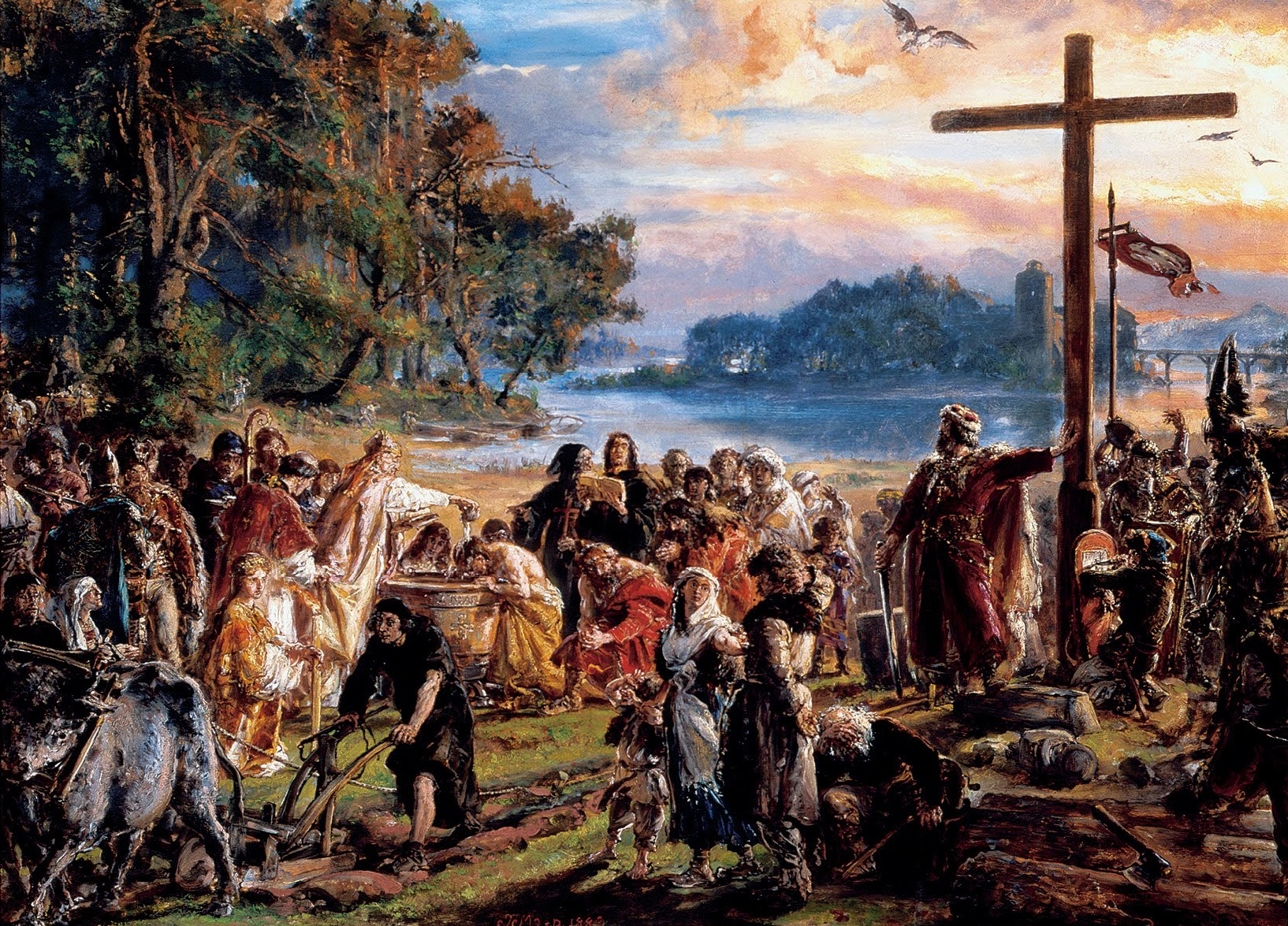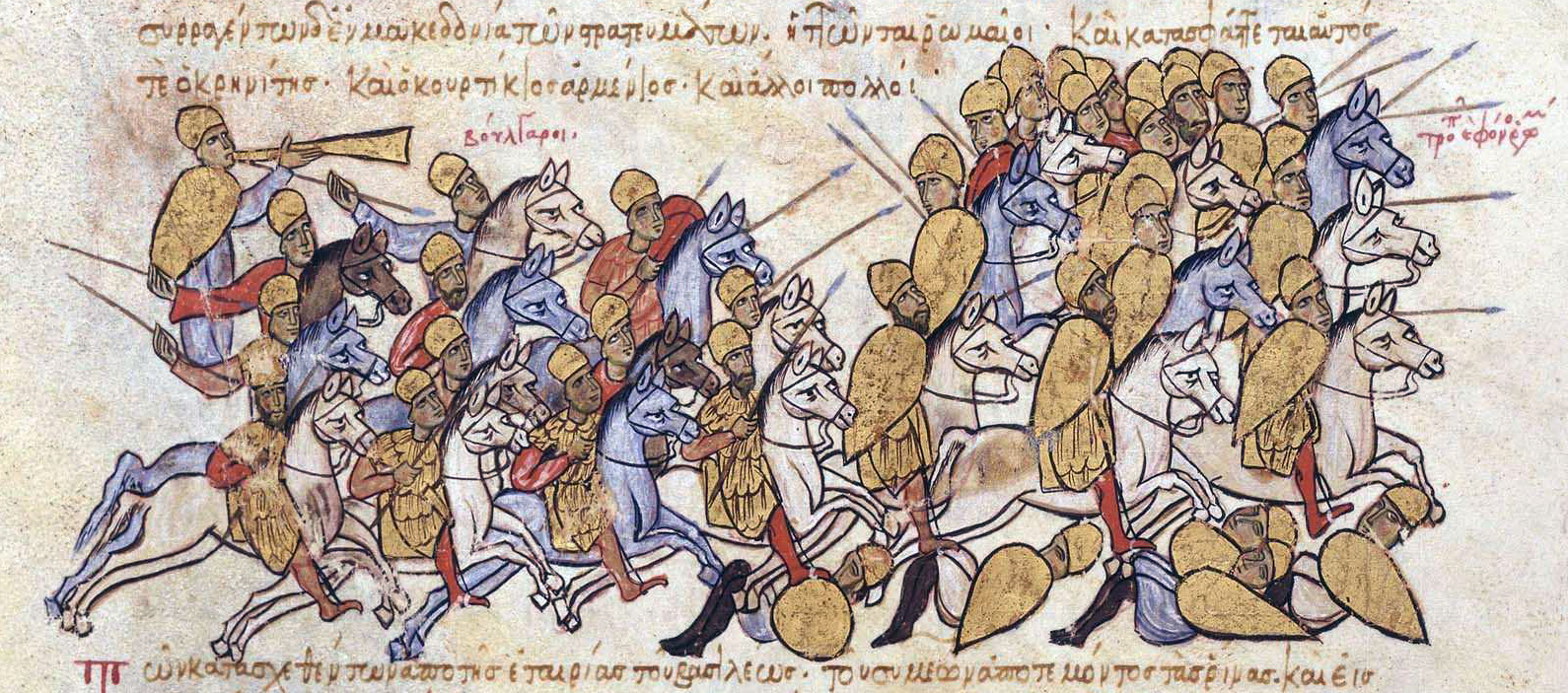|
Ono No Michikaze
was a prominent ''shodōka'' (Japanese calligrapher) during the Heian period (794–1185). One of the so-called Sanseki 三跡 (Three Brush Traces), along with Fujiwara no Sukemasa and Fujiwara no Yukinari, Michikaze is considered the founder of Japanese-style calligraphy or ''wayōshodō'' (和様書道). He is popularly extolled in Japan as the "reincarnation of Wang Xizhi". He was also known as Yaseki Tōfū. Life Michikaze was born in the present Kasugai, Aichi prefecture, as the grandson of a courtier-poet, Ono no Takamura. He was a government official, a poet and a calligrapher. He provided highly distinguished calligraphic services for three emperors during his career: Emperor Daigo, Daigo (), Emperor Suzaku, Suzaku () and Emperor Murakami, Murakami (). Michikaze's fame permitted him to serve, at the age of twenty-seven, in the Seiryoden, the residential quarters of the imperial court. As a recognition of the calligrapher's high skill, Emperor Daigo offered the Buddh ... [...More Info...] [...Related Items...] OR: [Wikipedia] [Google] [Baidu] |
Kana
are syllabary, syllabaries used to write Japanese phonology, Japanese phonological units, Mora (linguistics), morae. In current usage, ''kana'' most commonly refers to ''hiragana'' and ''katakana''. It can also refer to their ancestor , which were Kanji, Chinese characters used phonetically to transcribe Japanese language, Japanese (e.g. ''man'yōgana''); and ''hentaigana'', which are historical variants of the now-standard hiragana. Katakana, with a few additions, are also used to write Ainu language, Ainu. A Okinawan scripts, number of systems exist to write the Ryūkyūan languages, in particular Okinawan language, Okinawan, in hiragana. Taiwanese kana were used in Taiwanese Hokkien as ruby text for Chinese characters in Taiwan when it was Taiwan under Japanese rule, under Japanese rule. Each syllabogram, kana character corresponds to one phoneme or syllable, unlike kanji, which generally each logogram, corresponds to a morpheme. Apart from the five vowels, it is always ... [...More Info...] [...Related Items...] OR: [Wikipedia] [Google] [Baidu] |
10th-century Japanese Calligraphers
1 (one, unit, unity) is a number, numeral, and glyph. It is the first and smallest positive integer of the infinite sequence of natural numbers. This fundamental property has led to its unique uses in other fields, ranging from science to sports, where it commonly denotes the first, leading, or top thing in a group. 1 is the unit of counting or measurement, a determiner for singular nouns, and a gender-neutral pronoun. Historically, the representation of 1 evolved from ancient Sumerian and Babylonian symbols to the modern Arabic numeral. In mathematics, 1 is the multiplicative identity, meaning that any number multiplied by 1 equals the same number. 1 is by convention not considered a prime number. In digital technology, 1 represents the "on" state in binary code, the foundation of computing. Philosophically, 1 symbolizes the ultimate reality or source of existence in various traditions. In mathematics The number 1 is the first natural number after 0. Each natural number, ... [...More Info...] [...Related Items...] OR: [Wikipedia] [Google] [Baidu] |
966 Deaths
Year 966 ( CMLXVI) was a common year starting on Monday of the Julian calendar. Events By place Byzantine Empire * 23 June - Byzantine-Arab War: A prisoner exchange occurs at the border between the Byzantine Empire and the Emirate of Aleppo at Samosata, headed by Emperor Nikephoros II and Sayf al-Dawla, the Emir of Aleppo. The Emirate receives 3,000 captured prisoners from the region of Cilicia, after its conquest by the Byzantine Emperor, as well as the poet Abu Firas, who had been previously held prisoner by the Byzantines. Europe * Spring – King Lothair III marries Princess Emma of Italy (the only daughter of Adelaide of Burgundy—second wife of Emperor Otto I (the Great), from her first marriage with King Lothair II, member of the Bosonid dynasty). Lothair strengthens his ties with the Holy Roman Empire. He temporarily remains in control of the cities of Arras and Douai. The latter becomes a flourishing textile market centre during the ... [...More Info...] [...Related Items...] OR: [Wikipedia] [Google] [Baidu] |
894 Births
__NOTOC__ Year 894 ( DCCCXCIV) was a common year starting on Tuesday of the Julian calendar. Events By place Byzantine Empire * Byzantine–Bulgarian War: Stylianos Zaoutzes, leading minister and '' basileopator'', convinces Emperor Leo VI (the Wise) to move the Bulgarian market from Constantinople to Thessaloniki. This affects the commercial importance of Bulgarian trade. Simeon I, ruler ('' khan'') of the Bulgarian Empire, mobilizes his Bulgarian forces and invades Byzantine territory, ravaging the countryside. Europe * Spring – King Arnulf of Carinthia invades Italy at the head of an East Frankish expeditionary army, joining up with the deposed king Berengar I at Verona. He conquers Brescia after little resistance, and sacks Bergamo after a one-month siege. The cities of Milan and Pavia open their doors to Arnulf. Emperor Guy III escapes from Pavia, to hide in the mountains of Spoleto (Umbria). * March – Arnulf of Carinthia proceeds to Piacenz ... [...More Info...] [...Related Items...] OR: [Wikipedia] [Google] [Baidu] |
Japanese Calligraphy
, also called , is a form of calligraphy, or artistic writing, of the Japanese language. Japanese writing system, Written Japanese was originally based on Man'yōgana, Chinese characters only, but the advent of the hiragana and katakana Japanese syllabaries resulted in intrinsically Japanese calligraphy styles. Styles The term shodō (書道, "way of writing") is of Chinese origin and is widely used to describe the art of Chinese calligraphy during the medieval Tang dynasty. Early Japanese calligraphy was originated from Chinese calligraphy. Many of its principles and techniques are very similar, and it recognizes the same basic writing styles: * seal script (篆書 ''tensho'') (pinyin: ''zhuànshū''). The seal script (tensho) was commonly used throughout the Zhou dynasty (1046–256 BC) and the following Qin dynasty (221–206 BC) of China. After this time period, tensho style fell out of popularity in favor of reisho. However, tensho was still used for titles of published ... [...More Info...] [...Related Items...] OR: [Wikipedia] [Google] [Baidu] |
Ono No Michikaze - Frosch
ONO, Ono or Ōno may refer to: Places Fiji * Ono Island (Fiji) Israel * Kiryat Ono * Ono, Benjamin, ancient site Italy * Ono San Pietro Ivory Coast * Ono, Ivory Coast, a village in Comoé District Japan * Ōno Castle, Fukuoka * Ōno District, Fukui * Ōno District, Gifu * Ōno District, Ōita * Ōno, Chita District, Aichi * Ōno, Fukui * Ono, Fukushima * Ōno, Gifu * Ōno, Hiroshima * Ōno, Hokkaidō * Ono, Hyōgo * Ōno, Ibaraki * Ōno, Iwate * Ōno, Ōita * Ōno River, in Ōita Prefecture United States * Ono Island (Alabama) * Ono, California * Ono, Kentucky * Ono, Pennsylvania * Ono, Wisconsin People and language * Ono (surname), including a list of people bearing the name *Ono language ONO * The FAA identifier of Ontario Municipal Airport in Ontario, Oregon * Organization of News Ombudsmen (ONO) * ONO (Spain), a Spanish cable company ** ONO Estadi, a football stadium in Mallorca, Spain, named for the cable company * ONO, the name Yoko Ono uses for r ... [...More Info...] [...Related Items...] OR: [Wikipedia] [Google] [Baidu] |
Hanafuda
() are a type of Japanese playing cards. They are typically smaller than Western playing cards, only , but thicker and stiffer. On the face of each card is a depiction of plants, , animals, birds, or man-made objects. One single card depicts a human. The back side is usually plain, without a pattern or design of any kind, and traditionally colored either red or black. are used to play a variety of games including and . Outside Japan In Korea, are known as (, Hanja: ) and made of plastic with a textured back side. The most popular game is ''Go-Stop, Go-stop'' (), commonly played during special holidays such as Korean New Year, Lunar New Year and (). In Hawaii, is used to play Sakura (card game), Sakura. is also played in Micronesia, where it is known as and is used to play a four-person game, which is often played in partnerships. History Playing cards were introduced to Japan by the Portuguese in the mid-16th century. The Portuguese-suited playing cards, Portugues ... [...More Info...] [...Related Items...] OR: [Wikipedia] [Google] [Baidu] |
Ono Michikaze Frog
ONO, Ono or Ōno may refer to: Places Fiji * Ono Island (Fiji) Israel * Kiryat Ono * Ono, Benjamin, ancient site Italy * Ono San Pietro Ivory Coast * Ono, Ivory Coast, a village in Comoé District Japan * Ōno Castle, Fukuoka * Ōno District, Fukui * Ōno District, Gifu * Ōno District, Ōita * Ōno, Chita District, Aichi * Ōno, Fukui * Ono, Fukushima * Ōno, Gifu * Ōno, Hiroshima * Ōno, Hokkaidō * Ono, Hyōgo * Ōno, Ibaraki * Ōno, Iwate * Ōno, Ōita * Ōno River, in Ōita Prefecture United States * Ono Island (Alabama) * Ono, California * Ono, Kentucky * Ono, Pennsylvania * Ono, Wisconsin People and language * Ono (surname), including a list of people bearing the name *Ono language ONO * The FAA identifier of Ontario Municipal Airport in Ontario, Oregon * Organization of News Ombudsmen (ONO) * ONO (Spain), a Spanish cable company ** ONO Estadi, a football stadium in Mallorca, Spain, named for the cable company * ONO, the name Yoko Ono uses for r ... [...More Info...] [...Related Items...] OR: [Wikipedia] [Google] [Baidu] |
Kokin Wakashū
The , commonly abbreviated as , is an early anthology of the '' waka'' form of Japanese poetry, dating from the Heian period. An imperial anthology, it was conceived by Emperor Uda () and published by order of his son Emperor Daigo () in about 905. Its finished form dates to 920, though according to several historical accounts the last poem was added to the collection in 914. The compilers of the anthology were four court poets, led by Ki no Tsurayuki and also including Ki no Tomonori (who died before its completion), Ōshikōchi no Mitsune, and Mibu no Tadamine. Significance The ''Kokinshū'' is the first of the , the 21 collections of Japanese poetry compiled at Imperial request. It was the most influential realization of the ideas of poetry at the time, dictating the form and format of Japanese poetry until the late nineteenth century; it was the first anthology to divide itself into seasonal and love poems. The primacy of poems about the seasons pioneered by the ''Kok ... [...More Info...] [...Related Items...] OR: [Wikipedia] [Google] [Baidu] |
Waka (poetry)
is a type of poetry in classical Japanese literature. Although ''waka'' in modern Japanese is written as , in the past it was also written as (see Wa (Japan), Wa, an old name for Japan), and a variant name is . Etymology The word ''waka'' has two different but related meanings: the original meaning was "poetry in Japanese" and encompassed several genres such as ''chōka'' and ''sedōka'' (discussed below); the later, more common definition refers to poetry in a tanka, 5-7-5-7-7 metre. Up to and during the compilation of the in the eighth century, the word ''waka'' was a general term for poetry composed in Japanese, and included several genres such as , , and . However, by the time of the ''Kokinshūs compilation at the beginning of the tenth century, all of these forms except for the ''tanka'' and ''chōka'' had effectively gone extinct, and ''chōka'' had significantly diminished in prominence. As a result, the word ''waka'' became effectively synonymous with ''tanka'', and t ... [...More Info...] [...Related Items...] OR: [Wikipedia] [Google] [Baidu] |





